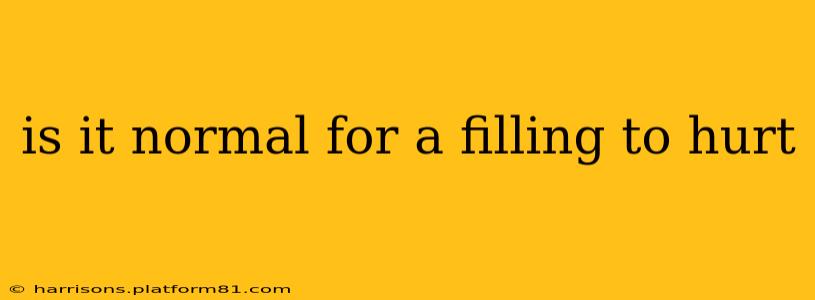It's completely understandable to be concerned if you're experiencing pain after getting a dental filling. While many people experience little to no discomfort, some pain is possible, and the intensity and duration can vary. This post will explore the common causes of post-filling pain, when it's cause for concern, and what you can do about it.
What Causes Post-Filling Pain?
Several factors can contribute to discomfort after a filling:
-
Sensitivity to Temperature: This is perhaps the most common cause. The filling material may alter the tooth's sensitivity to hot and cold temperatures, leading to a sharp, fleeting pain. This usually subsides within a few days as your tooth adjusts.
-
Inflammation: The filling procedure itself can cause minor inflammation in the surrounding tissues. This inflammation can lead to a dull ache or throbbing sensation. This typically resolves on its own within a few days.
-
Pressure: If the filling is too high or doesn't fit perfectly, it can put pressure on your tooth and surrounding gums, causing pain.
-
Irritation: The filling material might irritate the pulp (the soft inner part of the tooth) causing discomfort. This is less common with modern materials but still possible.
-
Infection: While rare, a persistent or worsening pain could indicate an infection. This requires immediate attention from your dentist.
How Long Does Post-Filling Pain Usually Last?
Mild discomfort, like temperature sensitivity, typically lasts only a few days. If the pain is more intense or persists for more than a week, it's crucial to contact your dentist.
When Should I See a Dentist After a Filling?
You should contact your dentist if you experience:
- Severe or persistent pain: Pain that doesn't subside after a few days or intensifies over time.
- Sharp, shooting pains: This could indicate a problem with the nerve in your tooth.
- Swelling: Swelling around the filling area suggests inflammation or infection.
- Increased sensitivity: Sensitivity that worsens rather than improves over time.
- Pain when biting down: This might indicate that the filling is too high or improperly placed.
What Can I Do to Relieve Post-Filling Discomfort?
Until you can see your dentist, you can try these home remedies for temporary relief:
- Over-the-counter pain relievers: Ibuprofen or acetaminophen can help manage mild to moderate pain. Always follow the recommended dosage instructions.
- Cold compresses: Applying a cold compress to the affected area can help reduce swelling and inflammation.
- Avoiding irritating foods: Stay away from extremely hot or cold foods and drinks, as well as sugary or acidic foods.
Is it normal for a filling to hurt when biting?
Pain when biting down after a filling is not normal and requires a dental visit. It frequently indicates that the bite is off, possibly due to a high filling. Your dentist can adjust the filling to resolve this issue.
Can a filling cause a headache?
While unusual, a high filling or infection related to a filling can potentially cause referred pain, leading to a headache. If you experience a headache in conjunction with dental pain, seek professional dental care promptly.
How long does it take for a filling to settle?
Most discomfort from a filling subsides within a few days. The adjustment period depends on the type of filling material used and the individual patient's response.
Remember, it's always best to err on the side of caution. If you have any concerns about pain after a dental filling, don't hesitate to contact your dentist. They can assess the situation and provide appropriate treatment. Early intervention can prevent more significant problems down the line.
